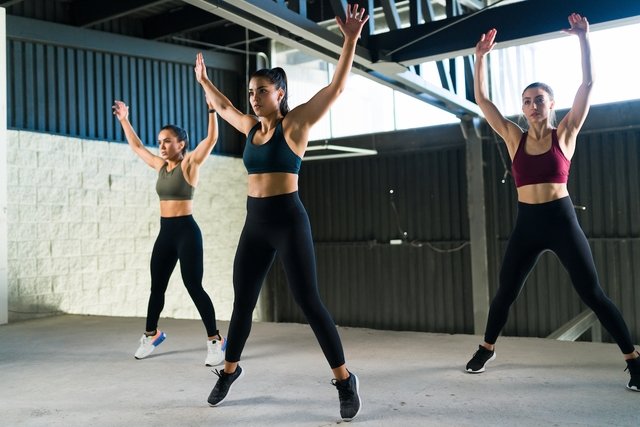Jumping jacks is a plyometric exercise, which quickly stretches and contracts muscles, and can be recommended for exercising several muscles in the body at the same time and losing weight, in addition to helping to gain strength and muscular endurance.
There are different types of jumping jacks that can be recommended depending on the person’s goals, health history and physical conditioning, the best known being the lateral jumping jack.
It is important that jumping jacks are initially done with the guidance of a physical education professional, who is the best professional to provide the necessary guidance for carrying them out correctly, in order to avoid injuries.

Benefits of jumping jacks
The main benefits of jumping jacks are:
1. Help you lose weight
Jumping jacks are capable of increasing the body’s heart rate and metabolism, favoring the burning of calories and, therefore, it is an exercise that can help you lose weight. See the most recommended exercises for losing weight.
2. Exercising several muscles at the same time
This is an exercise that uses several muscles in the body at the same time, especially the muscles in the legs, shoulders and abdomen.
3. Can be done anywhere
Jumping jacks is a calisthenics exercise, which uses only the body itself to work on muscular strength and endurance. It can be done anywhere as long as you have enough space. Discover other calisthenics exercises.
4. Strengthen and increase endurance
Jumping jacks is an exercise that quickly stretches and contracts muscles, also called plyometrics, making it a great exercise option for gaining strength and muscular endurance.
5. Promote bone health
As it is a plyometric exercise, jumping jacks make the bones and joints move more, which also encourages their strengthening.
Main types
The most common types or variations of jumping jacks are:
- Polichinelo lateral: is the traditional form of the exercise, which consists of moving the feet and arms laterally while jumping repeatedly;
- Polichinelo frontal: a variation of jumping jacks in which the arms and legs swing back and forth, rather than sideways as in the traditional form;
- Jumping jacks with steps: type of jumping jack in which, instead of jumping, steps are made alternately to the right and left. It is best suited for people with knee and/or ankle problems, for example.
Depending on the person’s goals and physical conditioning, the physical educator can indicate the most suitable type of jumping jack and guide how to do the movements correctly.
How to do jumping jacks
The step-by-step guide to doing lateral jumping jacks is as follows:
- Position your feet approximately shoulder-width apart and with your toes pointed forward;
- Place your arms at your sides, pulling your abdomen in and straightening your posture. This is the starting position;
- Perform a small jump, bending your knees and ankles quickly;
- Move your feet apart and raise your arms above your head in a synchronized manner during the jump;
- Repeat the jump from the new position where your feet touch the floor;
- Make the reverse movement with the arms and legs during the jump and in a synchronized manner to return to the starting position;
- Repeat the movement.
During the jumping jack exercise it is important to maintain the correct posture and avoid tilting your body, turning your feet outwards or landing on the floor with force so as not to overload your joints.
Although jumping jacks is a simple exercise, it is important that it is initially done with the guidance of a professional to perform the movement correctly and avoid injuries.

Sign up for our newsletter and stay up to date with exclusive news
that can transform your routine!
Warning: Undefined array key "title" in /home/storelat/public_html/wp-content/plugins/link-whisper-premium/templates/frontend/related-posts.php on line 12
Warning: Undefined array key "title_tag" in /home/storelat/public_html/wp-content/plugins/link-whisper-premium/templates/frontend/related-posts.php on line 13



